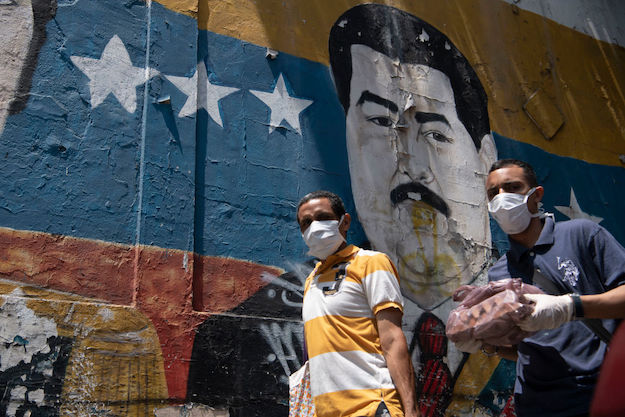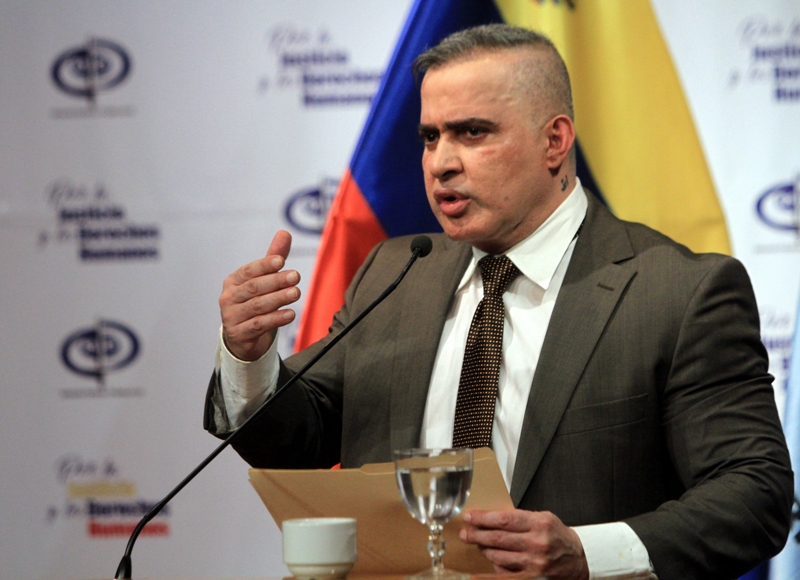Follow-up Report on the Complex Humanitarian Emergency in Venezuela. November 2023
HumVenezuela presented its assessment of the magnitude and severity of the Complex Humanitarian Emergency in Venezuela for the period spanning from March 2022 to November 2023. The report is the product of a collective effort of several civil society organizations and HumVenezuela to carry out periodic measurements of the impacts of the Complex Humanitarian Emergency on the Venezuelan population and evaluation of its evolution over time.
The methodology used in the preparation of the report follows a standardized common assessment framework of primary sources crossed with the best secondary information available. This methodology addresses the need to provide relevant data and information that contributes to guaranteeing assistance and protection to all the affected through a response guided by humanitarian principles and mandates and international law, based on identified needs and the demand for the protection of rights.
As in previous works, the assessment follows a three-stage methodological process in which primary data was collected through a survey of a representative sample of 11,000 households in 20 states of the country conducted in August 2023.
Around 1,000 sources of secondary data were reviewed and crossed with primary data, allowing the compilation of 400 indicators in sectors and areas essential for people’s lives. The indicators were subjected to sectoral and integrated analyses to estimate the magnitude, severity, intensity and reach of the impacts of the Complex Humanitarian Emergency at the national level and in 20 states of the country, on a population of 28.8 million, according to international estimates for 2023.
The results are accompanied by 49 tables of indicators for the period under review and are compared with measurements from 2020, 2021 and 2022.
SECTORAL ANALYSIS
LIVING CONDITIONS
69.6% of households live in multidimensional poverty, with a median income of 102.5 US dollars per month, enough to cover only 12.8% of a basket of basic goods and services. 68.2% percent reported public service deficits, with a high prevalence of increasing power outages. Criminality and lack of safety are some of the main hazards experienced by people in the community environment, with a high proportion of victims of abuse and/or violence carried out by third parties. Based on international and own estimates, 8.9 million people have been displaced since 2015. Until November 2023, the percentage of people reporting the intention of migrating increased from 8.0% to 13.4%: 9.8% to other countries and 3.6% to other areas within the country.
FOOD
Although the availability of food in the country has improved as a result of the increase in national production, the income of the majority of the population is not enough to cover all their food needs or to lead a healthy diet. The income deficit to buy a basic food basket reached 72.4%. More than 40% of households used other strategies to obtain food, including the depletion of livelihoods, the reduction of other essential expenses, and the sale of productive assets. However, food remains scarce for 41.9% of the population, while 25.7% of families skip one or more meals every day and 22.8% go without any food at all. As a consequence, food insecurity rose to 45.8% from 42.8% recorded in March 2022, with moderate insecurity remaining at 35.7% and severe insecurity increasing from 7.2% to 9.5%.
WATER AND SANITATION
86% of the surveyed families have to satisfy their water needs through alternative sources, as the deficiencies in the supply of water through the tap became more pronounced. The alternative self-procurement of water increased in all types of sources, notably rainwater and water provided by neighbors or relatives. 69.1% of people face severe drinking water restrictions: 45.5% do not receive water from the tap for periods that range from 2 weeks to several months or even never, while 23.6% lack a connection to the water distribution network. Due to these restrictions, 49.1% of people must reuse water for different hygiene activities, and 33.4% have reduced the amount of water they drink every day. Reports of contaminated water increased from 73.7% to 82.5%, while 12.5% of people reported having to drink unsafe water. 27% of the households surveyed do not use any water purification method, up from 17%.
HEALTH
Around 87.8% of people depend on the public health system to care for their medical needs. 97.6 percent do not have financial protection and 54.8% lack financial resources to cover health expenses. Approximately 72.4% of the people who turned to the public health system did not find medical care and 69.9% could not continue their treatments due to inoperative essential hospital services, leaving people with chronic and acute health problems with no guarantee of medical care in the country. Regarding healthcare needs, 58.8% of people required laboratory tests, 37.3% emergency services, 32.1% surgeries, and 16.5% trauma care services. At least 1.6 million women do not have access to operational or nearby delivery services.
BASIC EDUCATION
18% of children and adolescents aged 3 to 17 are outside the education system: 7.2% have dropped out while 10.8% have never attended school. By age group, non-enrolment was highest among 4 to 6-year-old children. 29.9 percent of children and adolescents who do not attend school are working, mostly among the 7 to 17-year-old group. 88.3 percent of the roughly 6.6 million children and adolescents who attend school go to public learning centers, while 11.7% are enrolled in private schools. Enrollment in private learning centers has been in decline. Irregular school attendance increased from 45.1% to 51.6% in the period under review due to deficiencies attributable to the education sector (48.3%), difficulties at home (35.1%) and other adverse circumstances (16.6%). 18.1 percent of pupils received less than 50 days of classes in a school year. 56.6% of children and adolescents are not serviced by the School Feeding Program while 28.5% of those who have access do not receive healthy and adequate food portions.
INTEGRATED ANALYSIS
After having conducted an integrated analysis of the data, the results show that approximately 400 thousand people have been added by November 2023 to the population in need estimated in 2022, reaching a total of 20.1 million, including 14.2 million people in critical need and 4.2 million in severe need. After the relief of 2021 and 2022 when confinement measures were lifted and a slight economic recovery was observed, the worsening of conditions between 2022 and 2023 has caused greater levels of need, increasing the number of people with critical needs and the number of people with severe needs, estimated at 1.6 million.
No state of the country is exempt from the impacts of the Complex Humanitarian Emergency, given its generalized and structural nature. Even though the proportion of the damage is high in all the states, each one presents a different picture according to the extent of the effects, their distribution across each region, and the national averages.
Given this situation, it is essential to make the maximum effort to preserve the humanitarian response and space in the country by overcoming the unresolved challenges posed by access restrictions on the response; promoting the operative objectives in Venezuela in support of the work of national organizations and their participation in the structures of humanitarian coordination, planning and funding; ensuring that a balanced response based on people’s needs; promoting an environment of rights-observance in the country, and advance a comprehensive protection strategy at all levels.
Download the full report in Spanish HERE
Download the tables and data of the study HERE
Translated by José Rafael Medina




